Physical Address
304 North Cardinal St.
Dorchester Center, MA 02124
Physical Address
304 North Cardinal St.
Dorchester Center, MA 02124
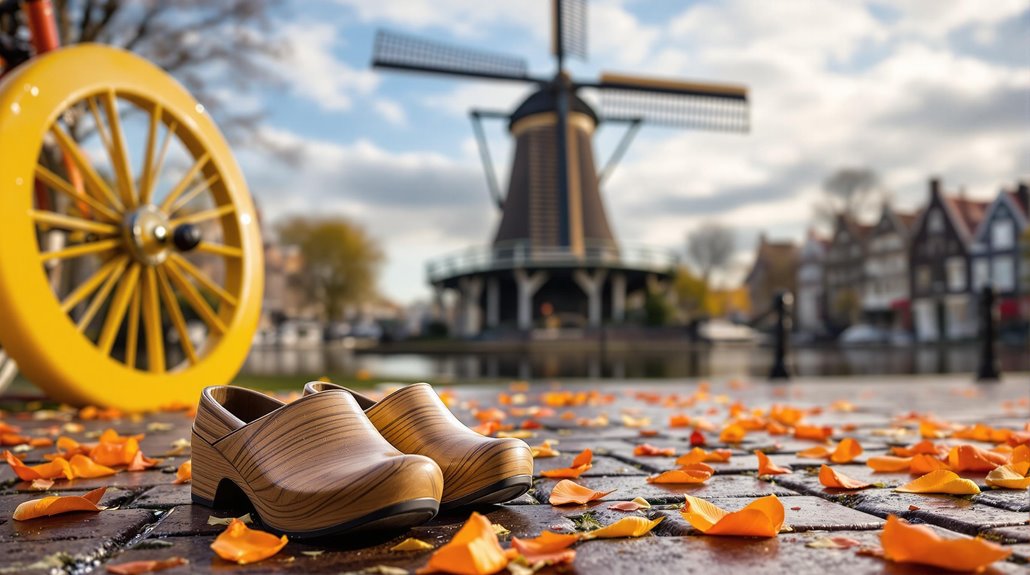
Beyond wooden clogs and windmills, discover which Dutch stereotypes are surprisingly true and which ones completely miss the mark.
While the Netherlands evokes images of windmills and wooden clogs, many stereotypes about Dutch culture don’t match reality. You won’t find locals living in windmills or wearing clogs daily, and not everyone has blond hair or lives near tulip fields. However, some stereotypes hold true – the Dutch are among the world’s tallest people, they’re excellent English speakers, and cycling remains central to daily life. Let’s explore what’s fact and fiction about Dutch culture.
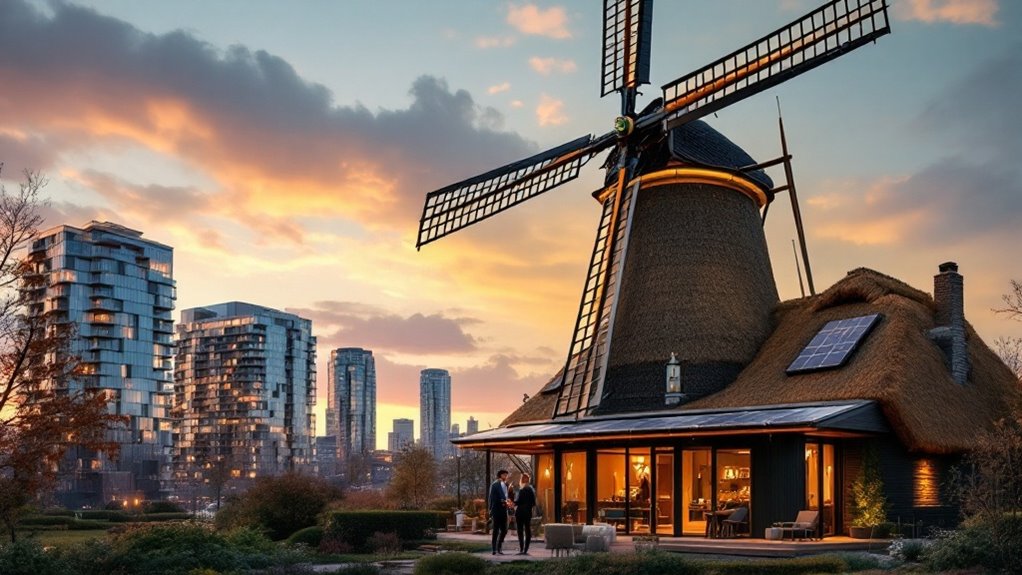
When you picture the Netherlands, you might imagine Dutch families living inside quaint windmills dotting the countryside, but this common stereotype couldn’t be further from the truth.
While the Netherlands once had over 9,000 windmills in the mid-19th century, today only about 1,200 survive, and none have ever been used as homes. These historic structures were actually built for water management, helping to pump water from polders and enable land reclamation projects.
At popular sites like Kinderdijk, where 19 windmills remain, you’ll discover they’re preserved purely for their cultural and historical significance. The site was recognized by UNESCO in 1997 as a World Heritage site for its remarkable contribution to water management technology.
Though windmills remain an important symbol of Dutch ingenuity, modern Dutch people live in conventional homes while massive offshore wind turbines, not traditional windmills, power their everyday lives.
Among the most persistent stereotypes about the Netherlands, one will encounter the belief that Dutch people still wear wooden clogs, or “klompen,” as their everyday footwear.
While these iconic wooden shoes have a rich history dating back to the 13th century, you’ll discover that less than 1% of urban Dutch residents wear them regularly today. The earliest examples of these shoes were discovered in a peat bog in Drenthe.
The traditional footwear, once essential for farmers and fishermen due to its water-resistant properties and protective features, is now primarily seen during cultural festivals or in rural agricultural settings.
Though wooden clogs have earned EU safety certification and remain practical for specific industries, they’ve largely been replaced by modern footwear in daily life.
You’ll mostly spot them in tourist shops or museums, where they serve as symbols of Dutch heritage.
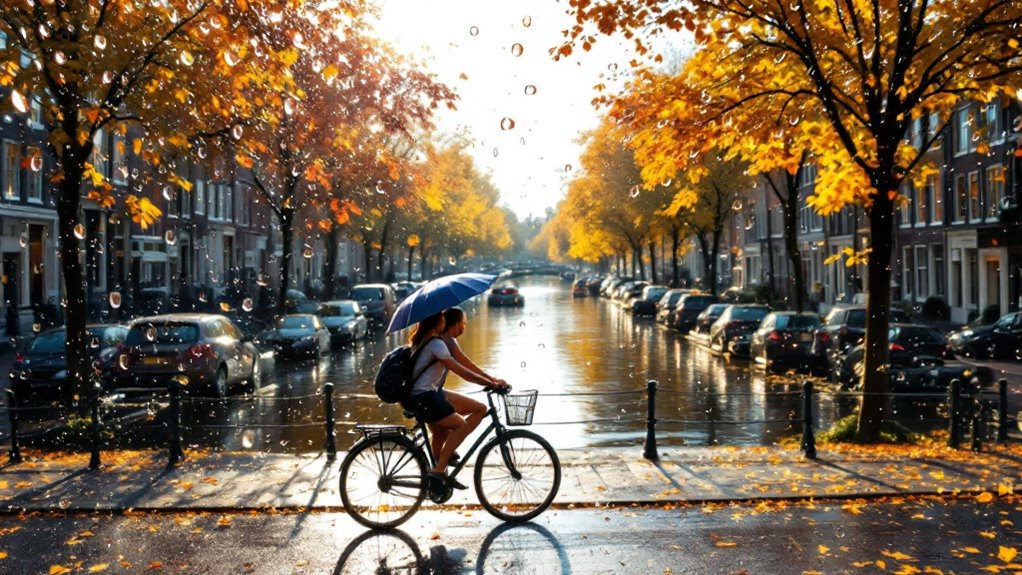
Another widespread misconception about the Netherlands shifts our attention from wooden shoes to weather patterns – specifically, the belief that it’s constantly raining in this low-lying nation.
While the country does receive around 865mm of annual rainfall and experiences 220-235 rainy days per year, you’ll discover that most precipitation comes as light drizzle rather than heavy downpours.
The perception of perpetual rain is largely influenced by high cloud cover and the country’s prominent water management infrastructure, like canals and dikes.
Summer months actually average a moderate 56-97mm of rain, and Amsterdam’s yearly rainfall of 942mm is comparable to many other European cities.
Yes, it’s often cloudy, but you won’t need to pack an umbrella for every single day of your visit. In fact, 2024 is on track to become one of the wettest years on record, potentially reaching over 1,000 millimetres of rainfall.
Three generations of remarkable growth have transformed the Dutch from one of Europe’s shortest populations into the world’s tallest nation.
You’ll discover Dutch men averaging 183.78 cm (6 ft) and women reaching 170.36 cm (5 ft 7 in), surpassing even their Nordic neighbors. This dramatic height increase, which began in the 1870s, stems from several key factors you mightn’t expect: widespread access to dairy products, universal healthcare, and the country’s strong social welfare system.
Even from a young age, Dutch children show exceptional height, with boys at age 10 reaching 146.88 centimeters on average.
While you might picture all Dutch people as towering giants with blond hair and blue eyes, the reality is more diverse.
Though the height statistics are accurate, only about a third of the population has blond hair, and even fewer have blue eyes, especially in cosmopolitan areas like Amsterdam.
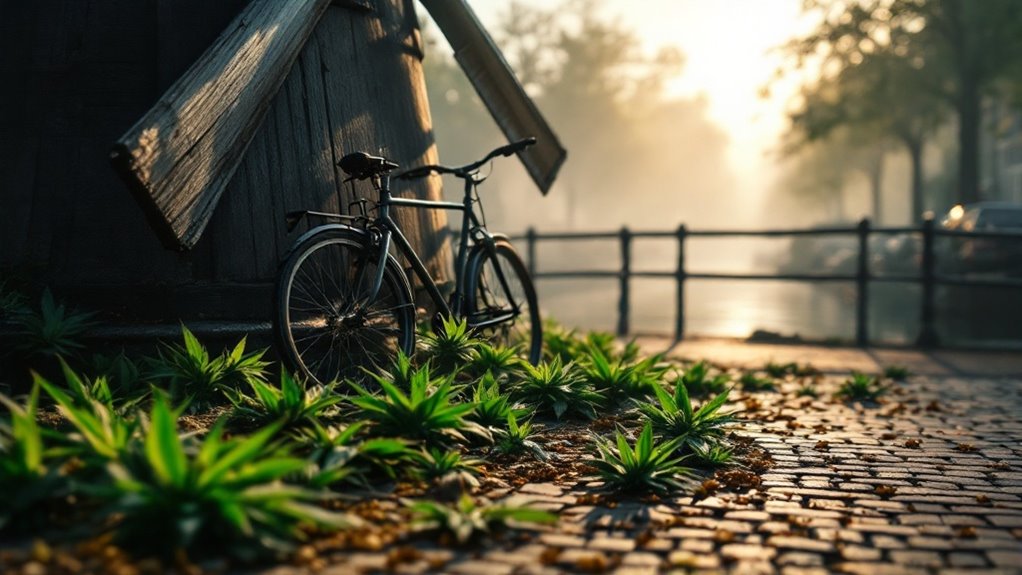
Despite popular belief, cannabis isn’t actually legal in the Netherlands – it’s merely tolerated under a unique policy called gedoogbeleid.
The Netherlands famously tolerates cannabis through gedoogbeleid, but contrary to what many think, it’s not technically legal there.
You’ll discover that the famous coffee shops can legally sell cannabis under strict conditions, but they can’t hold more than 500 grams in stock or sell more than 5 grams per transaction.
If you’re planning to visit, remember that many municipalities only allow residents aged 18 and over to purchase cannabis, thanks to the 2013 “residency criteria” rules.
The system isn’t perfect either – while retail sales are tolerated, production and wholesale distribution remain criminal offenses, creating what’s known as the “backdoor problem.” Growing more than five cannabis plants for personal use will result in prosecution.
Most Dutch cities maintain authority to ban coffee shops or enforce stricter local regulations, so don’t assume you’ll see them everywhere.
The Dutch reputation for directness often surprises first-time visitors to the Netherlands, especially those coming from cultures that value subtle communication.
You’ll quickly notice that Dutch people tend to speak their minds without sugarcoating, which stems from their cultural values of honesty and efficiency.
While this directness might seem rude to outsiders, it’s actually rooted in the Netherlands’ Calvinist traditions and seafaring history, where clear communication was essential for survival.
In business settings, you’ll encounter flat hierarchies and open feedback, with minimal use of formal titles. This preference for direct interaction means they often view excessive politeness as distrustful.
Don’t take offense if someone gives you blunt criticism or maintains intense eye contact – these are signs of sincerity in Dutch culture.
Remember that what might appear as rudeness is simply a different communication style, focused on transparency and straightforwardness.
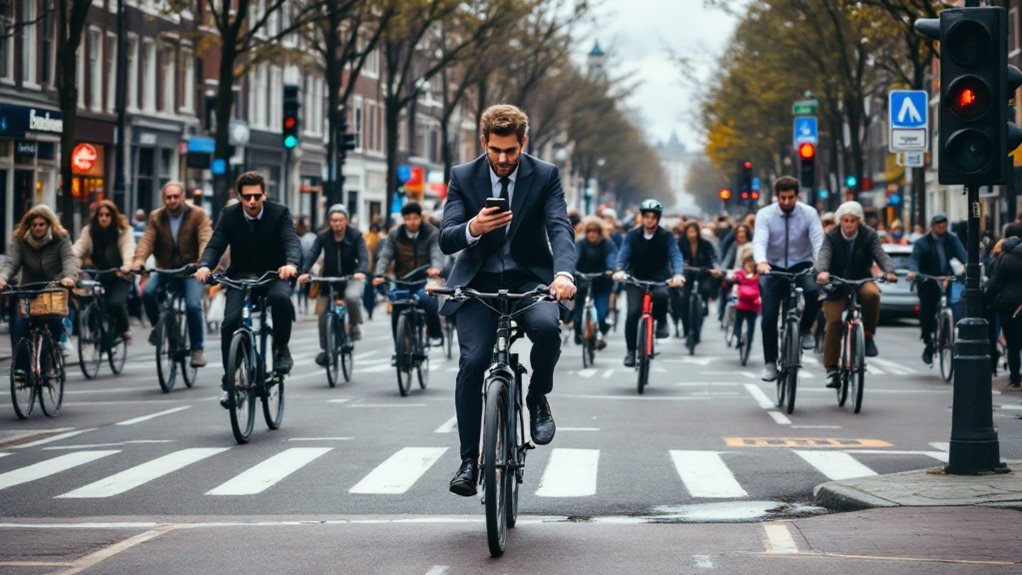
While it’s true that Amsterdam boasts more bicycles than residents, not everyone pedals through the city’s picturesque streets daily. However, you’ll discover that 58% of residents aged 12 and older do cycle every day, making it an integral part of the city’s culture.
Amsterdam’s cycling culture thrives with 58% of residents pedaling daily, despite not everyone joining the two-wheeled movement.
You’ll notice the extensive infrastructure supporting this lifestyle, with over 477 miles of dedicated bike paths marked by distinctive red lanes. The relaxed cycling atmosphere allows residents to enjoy side-by-side conversations while riding.
The city’s commitment to cycling is evident in its massive bicycle parking facilities, including an underwater garage at Central Station that holds 11,000 bikes.
If you’re planning to join the cycling culture, you’ll benefit from the city’s 225,000 public bike racks and 25 secure garages, though you should be prepared for occasional congestion during peak hours and crowded parking areas.
Popular misconceptions about Dutch frugality don’t tell the whole story, as you’ll discover a culture that values financial prudence rather than miserliness. While the Dutch carefully track their spending and actively seek value for money, they’re also generous with charitable donations and willing to invest in sustainable products. Their high annual consumer spending of 19.5k USD per capita demonstrates their willingness to make purchases when they see value.
| Dutch Financial Habits | Reality vs. Perception |
|---|---|
| Savings Satisfaction | Over 50% report contentment |
| Shopping Behavior | 72% say it brings happiness |
| Price Comparison | 59% research while in stores |
| Digital Banking | Widely used for tracking |
| Charitable Giving | Strong despite frugal habits |
You’ll find that the Dutch approach to money reflects smart financial planning rather than stinginess. They’ll happily spend on what matters, like international travel and environmental initiatives, while maintaining practical daily habits such as packed lunches and cycling to save on transportation costs.
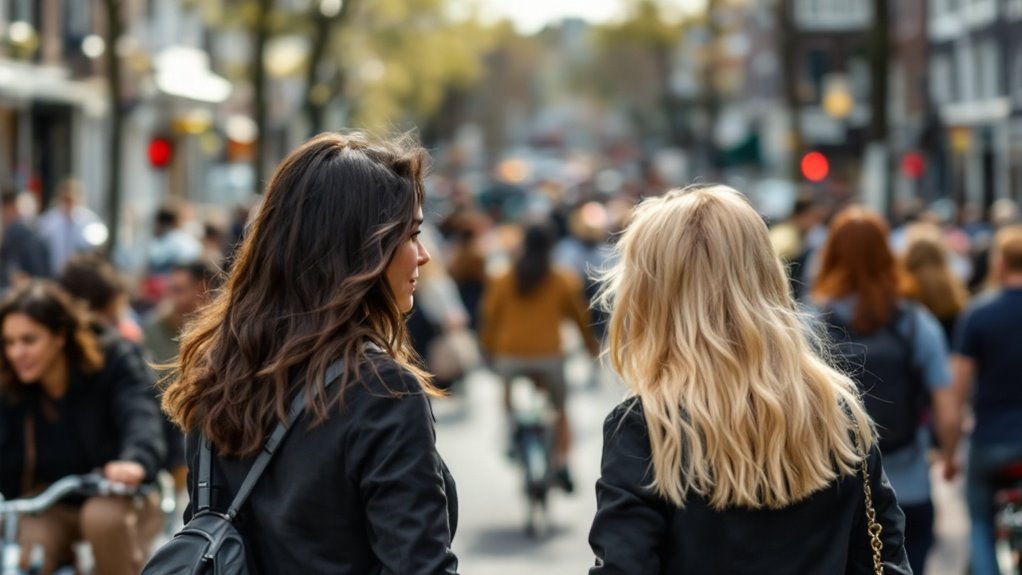
Many visitors to the Netherlands arrive with preconceptions about encountering a nation of blond-haired individuals, yet data reveals a more nuanced reality.
While blond hair is common, it’s not as prevalent as stereotypes suggest, with only about two-thirds of Dutch people naturally or artificially sporting lighter shades.
A recent study involving over 20,000 Dutch participants found that broad-sense heritability explains up to 99% of hair color variations in the population.
If you’re curious about Dutch hair colors, here’s what you should know:
The stereotype persists partly due to tourism marketing and media portrayal, which often emphasize “Nordic” features despite the country’s increasingly diverse population.
Despite the Netherlands’ remarkable English proficiency rankings, Dutch remains the country’s primary language and official tongue. You will discover that while the Dutch excel at English, with over 90% speaking it fluently, they’ve achieved this through education and cultural exposure rather than replacing their native language. The Netherlands has consistently demonstrated outstanding English skills, overtaking Sweden for the top spot among non-native English speaking nations.
| Factor | Impact on English Proficiency |
|---|---|
| Education | Mandatory English from age 10 |
| Media | Subtitled vs dubbed content |
| University | English-taught master’s degrees |
| Workplace | International business focus |
| Culture | Code-switching with foreigners |
The Dutch education system integrates English thoroughly, requiring students to reach high proficiency levels before graduation. While you will easily navigate the Netherlands using English, learning basic Dutch phrases shows respect and cultural appreciation, as locals take pride in their mother tongue.
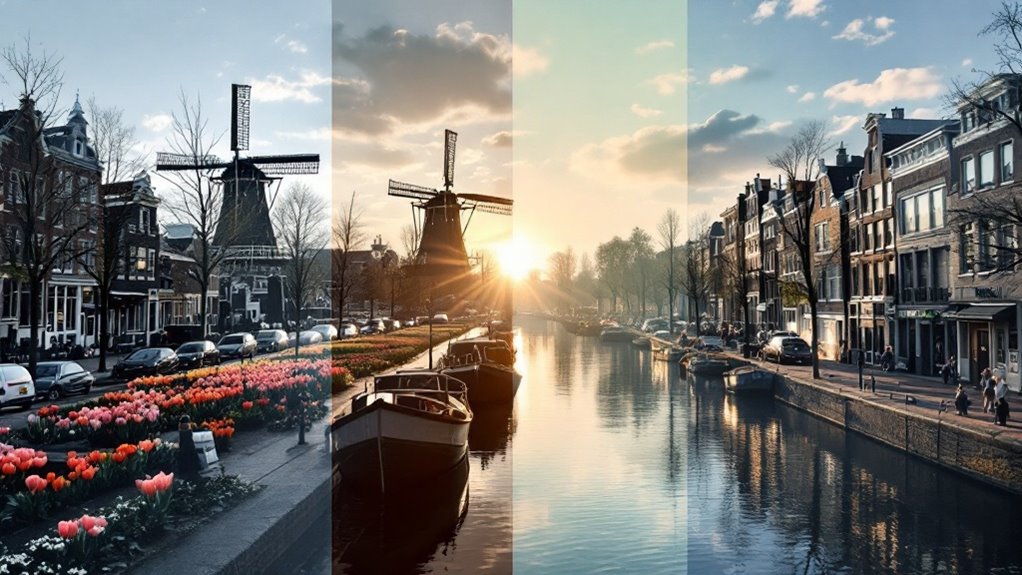
Just as Dutch people expertly navigate between their native language and English, you’ll need to look beyond Amsterdam to truly understand the Netherlands.
While Amsterdam’s charm is undeniable, it represents just 8.7% of the country’s population, with lively cities and regions offering unique experiences across 12 distinct provinces.
Much like Lisbon’s vegan scene continues to surprise visitors, the Netherlands defies simple categorization.
The Netherlands’ four main regions – North, South, West, and East – each contribute their own distinct cultural character to the nation’s identity.
Similar to how plant-based dining has transformed Lisbon’s culinary landscape, each Dutch city offers its own unique cultural experiences.
Like Berlin’s vibrant culture attracts millions of visitors annually, the Netherlands offers diverse attractions throughout its cities.
Consider these compelling alternatives to Amsterdam:
Many common misconceptions persist about Dutch culture and lifestyle despite the country’s rich diversity.
From Friesland’s unique language to Limburg’s regional festivals, you’ll discover how Dutch culture varies considerably by region.
Don’t miss UNESCO sites like Kinderdijk or the spectacular Keukenhof Gardens, which showcase the Netherlands’ vibrant history beyond its capital.
While tulip fields have become an iconic symbol of Dutch culture, the reality is that most Dutch citizens don’t wake up to views of colorful bulb farms outside their windows. The Netherlands dedicates only 13,000 hectares to tulip cultivation, primarily in rural regions like Noordoostpolder and Kop van Noord-Holland, far from major population centers. Despite being a relatively small area, Dutch farmers produce and export 2 billion tulip bulbs annually, making them the world’s largest supplier.
| Region | Population Density | Distance to Tulip Fields |
|---|---|---|
| Amsterdam | Very High | 30+ km |
| Flevoland | Low | 0-5 km |
| Rotterdam | Very High | 40+ km |
| Lisse | Medium | 0-2 km |
| Noord-Holland | Medium-High | 5-15 km |
You’ll find most Dutch people living in urban areas where housing and infrastructure take priority over bulb farming. Less than 0.1% of the population works in the flower bulb industry, and the majority experience tulips through cut flowers or seasonal festivals rather than nearby fields.
Based on the background data, you will discover that around 3% of Dutch people own recreational boats, with approximately 500,000 vessels for a population of 17 million. However, this percentage is declining among younger generations.
You will discover Dutch people typically work 32.2 hours per week on average, though it varies. Full-time employees work 36-40 hours, while part-time work is common, especially among women who often choose shorter schedules.
While you might think Dutch food is limited, you’ll love their hearty stamppot (mashed potatoes with veggies), crispy bitterballen, savory erwtensoep (pea soup), sweet poffertjes (mini pancakes), and fresh kibbeling (fried fish).
You will discover Dutch education unique with its early tracking at age 12, flexible pathway options, and dual higher education system. It’s less academically pressured, more affordable, and focuses heavily on student well-being.
You will discover the Dutch embracing field hockey as their second love, with cycling being everyone’s daily companion. Their passion extends to volleyball, where they’re global contenders, and korfball, their unique mixed-gender creation.
Like a well-tended Dutch garden, you will discover that these stereotypes only scratch the surface of this dynamic country. While some myths hold kernels of truth – yes, the Dutch are remarkably tall – you’ve learned that the Netherlands is far more complex than wooden shoes and windmills suggest. Next time you’re planning a trip to this fascinating nation, you’ll know exactly what to expect – and more importantly, what not to.